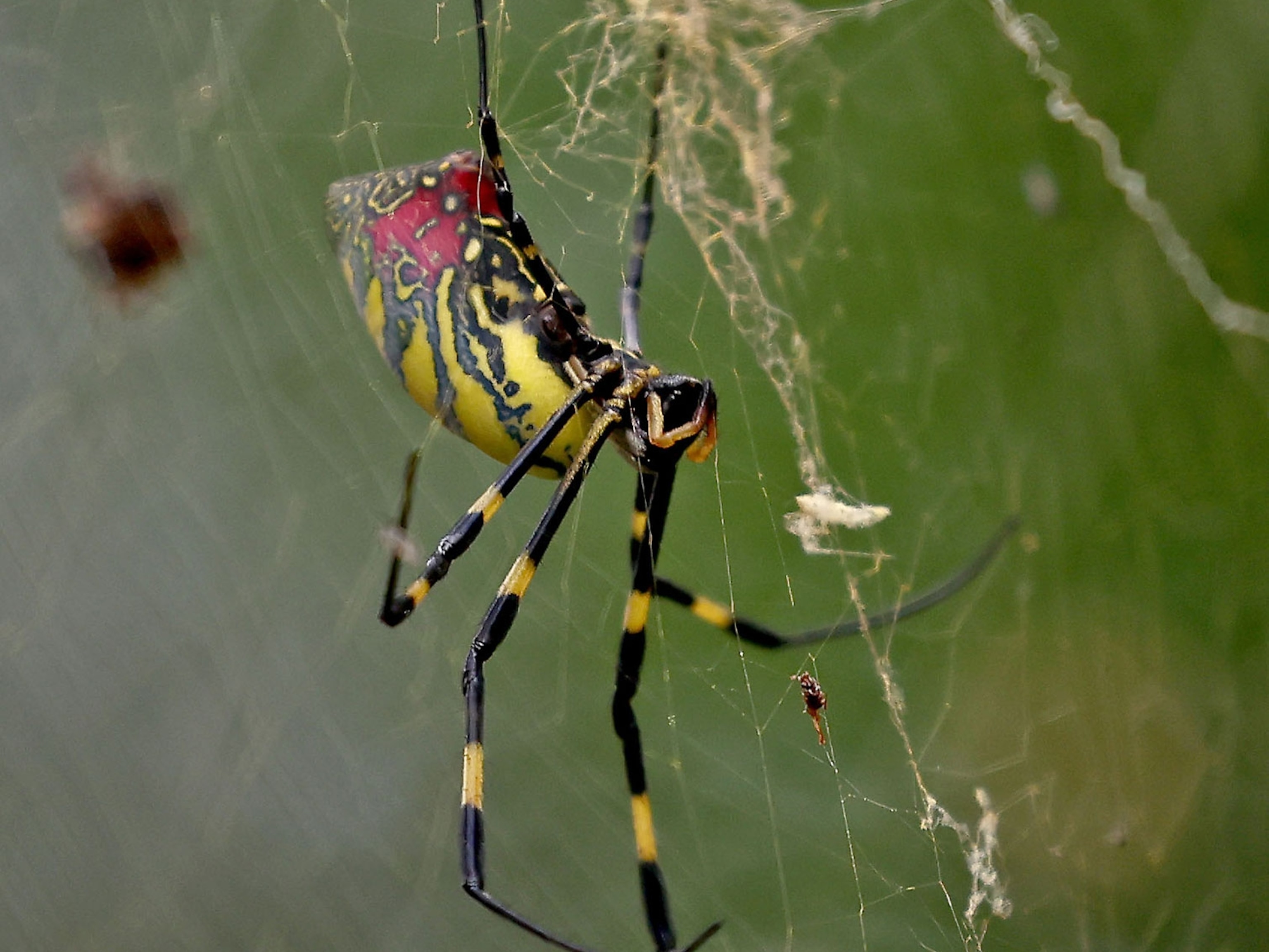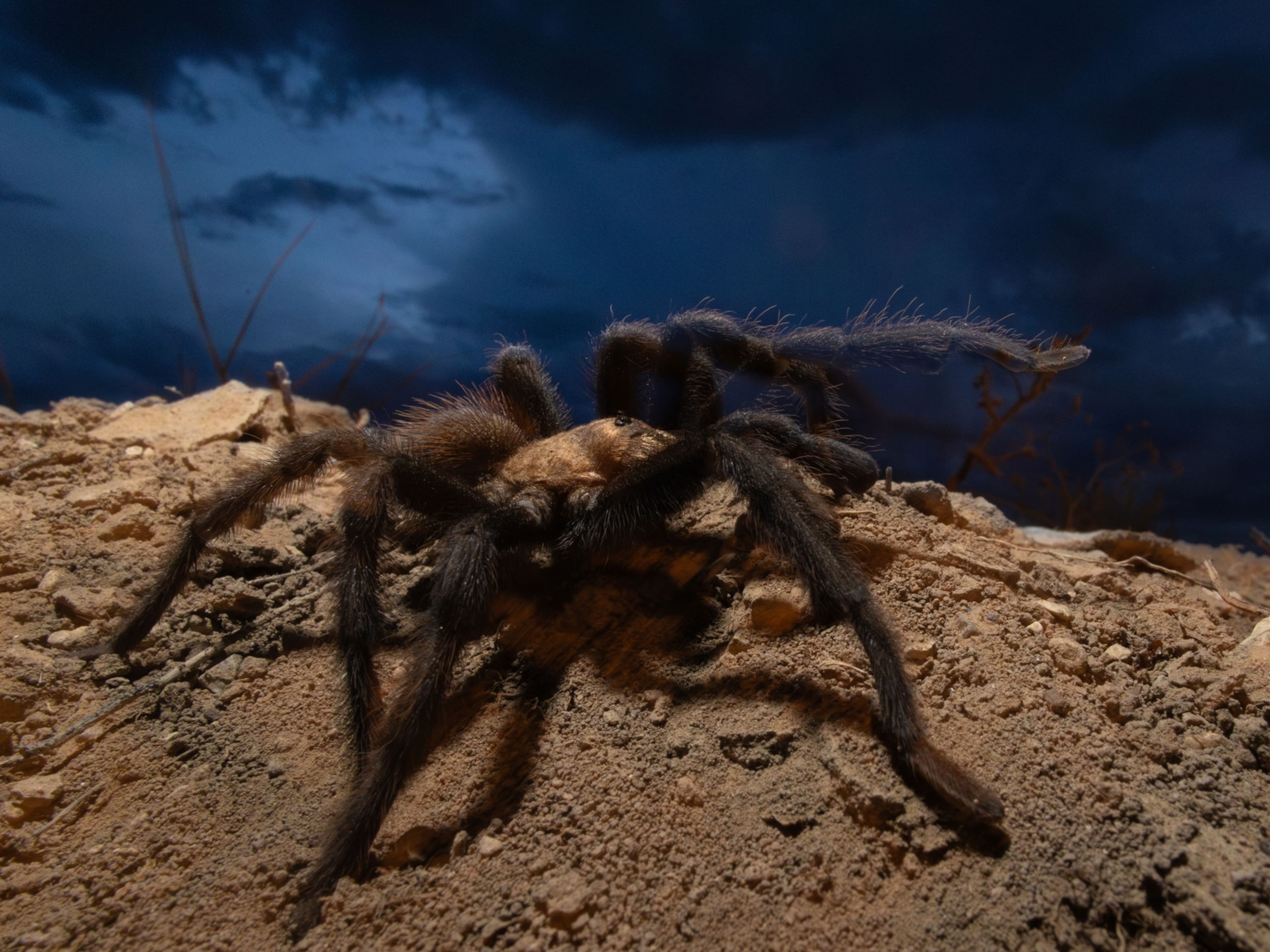
Hybrid Silkworms Spin Spider Silk—A First
Stronger silk may be used to make parachutes, artificial limbs.
Spider-Man's web-shooters can create yards and yards of spider silk, but in real life, making such a strong, stretchy rope hasn't been easy.
Now, science has come one step closer to fiction with silkworms that spin spider silk.
New genetically modified silkworms produce cocoons incorporating the stretchier, stronger fibers spiders use to spin their webs, according to a new study. (See pictures: "World's Biggest, Strongest Spider Webs Found.")
"Our hope was that by embedding spider-silk protein [gene] sequences within silkworm silk [gene] sequences, we could get those proteins to co-assemble ... into composite fibers, and that is what happened," said study co-author Don Jarvis, a molecular biologist at the University of Wyoming in Laramie.
The genetically engineered silkworms produced silk that was still 96 to 98 percent silkworm, with only 2 to 4 percent of the fiber proteins coming from spiders, Jarvis said.
Even with such a small uptake of spider genes, the hybrid silk was more than twice as tough as natural silkworm silk—yet still about half as strong as spider silk.
"If we can drive this [effect] from 2 to 4 percent to a hundred percent, we should be able to produce truly amazing fibers," Jarvis said.
"It just reflects how much of the spider silk is being produced in the soluble form."
(See "Gene for Key Spider-Silk Protein Found.")
Glowing Silkworms
Spiders create the best silk in terms of strength and elasticity. But many species are territorial or cannibalistic, making them difficult to farm.
That's why researchers have tried to insert spider-silk protein gene sequences into other products, such as goats' milk and hamster cells.
A benefit of using silkworms is that the insects spin silk proteins into fibers by themselves, whereas spider-silk proteins grown in a lab must be spun by machine.
To create these "spider silkworms," Jarvis and colleagues inserted DNA for a type of spider silk that's both stretchy and strong into silkworm eggs.
To make sure the genetic transformation was a success, the scientists also added green fluorescent protein to the eggs, so that successfully engineered silkworms would glow under blue light.
Surprisingly, the worms' silk glands glowed even under normal light—which is "totally amazing," said Jarvis, whose study appeared this week in the journal Proceedings of the National Academy of Sciences.
"It just reflects how much of the spider silk is being produced in the soluble form."
(See pictures: "Glowing Animals: Beasts Shining for Science.")
Spider-Silk Parachutes?
Next, the team hopes to increase the amount of spider-silk proteins that are assembled into the silkworms' fibers.
"Stronger and more elastic is going to be better" for the desired applications, said study co-author Randy Lewis, also of the University of Wyoming.
The fiber is being commercialized by textile manufacturer Kraig Biocraft. (Lewis, Jarvis, and co-author Malcolm Fraser sit on Kraig's scientific board.)
(See "Artificial Spider Silk Could Be Used for Armor, More.")
"We're not looking at bulletproof vests," Lewis said. "We're looking at artificial limbs, tendons, parachutes, and landing lines on aircraft carriers—[situations] where we need elasticity and strength."





